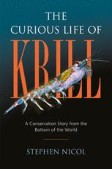Search
Search Results
-
Origin and Evolution of Birds
Archaeopteryx lived about 155 million years ago and was a descendent of a long line of dinosaur and theropod ancestors. In this chapter, I review...
-
Factors affecting the importance of myctophids in the diet of the world’s seabirds
Mesopelagic myctophid fish are a key component of the world’s ocean food webs, linking primary consumers and predators. Among marine predators,...

-
Population Genomics Advances and Opportunities in Conservation of Kiwi (Apteryx spp.)
Kiwi (Apteryx spp.) are highly threatened flightless birds endemic to New Zealand. They are members of the most basal extant avian lineage, the...
-
The ecological value of long-term studies of birds and mammals in Central America, South America and Antarctica
This review covers long-term ecological studies in Central America, South America, and Antarctica that include at least 10 years of data on both...

-
Chromosome-level assembly reveals extensive rearrangement in saker falcon and budgerigar, but not ostrich, genomes
BackgroundThe number of de novo genome sequence assemblies is increasing exponentially; however, relatively few contain one scaffold/contig per...

-
Physiological Adaptations for Breath-Hold Diving
Marine mammals are adapted to long interruptions in breathing that enable them to maintain an oxygen-based metabolism and physiological homeostasis...
-
Spatio-temporal occurrence patterns of cetaceans near Ross Island, Antarctica, 2002–2015: implications for food web dynamics
The Ross Sea pelagic food web is closely coupled, with the foraging among abundant upper level species affecting the foraging of one another. To...

-
Contrasting responses to a climate regime change by sympatric, ice-dependent predators
BackgroundModels that predict changes in the abundance and distribution of fauna under future climate change scenarios often assume that ecological...

-
Introduction: Native Plants of Argentina – A General Overview
The geographical distribution of plant species depends on temperature, humidity, solar radiation, salinity, and relationships with surrounding...
-
Why do satellite transmitters on emperor penguins stop transmitting?
BackgroundInvestigation of early transmission failure from animal-borne, satellite transmitters should reveal vital information about the reliability...

-
Parasitic Groups
The term protozoa describes heterotrophic, single-celled eukaryotes of different origin and comprises a variety of species, most of which are...
-
Evolution of CYP2J19, a gene involved in colour vision and red coloration in birds: positive selection in the face of conservation and pleiotropy
BackgroundExaggerated signals, such as brilliant colours, are usually assumed to evolve through antagonistic coevolution between senders and...
-
Dispersal in the sub-Antarctic: king penguins show remarkably little population genetic differentiation across their range
BackgroundSeabirds are important components of marine ecosystems, both as predators and as indicators of ecological change, being conspicuous and...

-
Introduction
In this chapter we examine the goal of confronting and elaborating upon the outlines of evolutionary theory within a framework that collaborates in...
-
Going with the Floes
I can see the Southern Ocean from my kitchen window in the south of Tasmania, Australia’s island state. This vast tract of water stretches some three...
-
Antarctic Specially Protected Areas (ASPA): a case study at Rothera Point providing tools and perspectives for the implementation of the ASPA network
Antarctica is considered among the world’s last great wildernesses, but its current network of Antarctic Specially Protected Areas (ASPAs) is...

-
P
a family of relatively small ornithischian dinosaurs, named for a very thick skull roof. Bipedal and generally herbivorous, they have a great deal of...
-
Building capacity in biodiversity monitoring at the global scale
Human-driven global change is causing ongoing declines in biodiversity worldwide. In order to address these declines, decision-makers need accurate...

-
Assessing the effects of helicopter disturbance in a mountain ungulate on different time scales
Noisy human activities such as helicopter traffic may affect physiology and behaviour of wild animals. Since chronic behavioural modifications can...
-
Two Antarctic penguin genomes reveal insights into their evolutionary history and molecular changes related to the Antarctic environment
BackgroundPenguins are flightless aquatic birds widely distributed in the Southern Hemisphere. The distinctive morphological and physiological...

